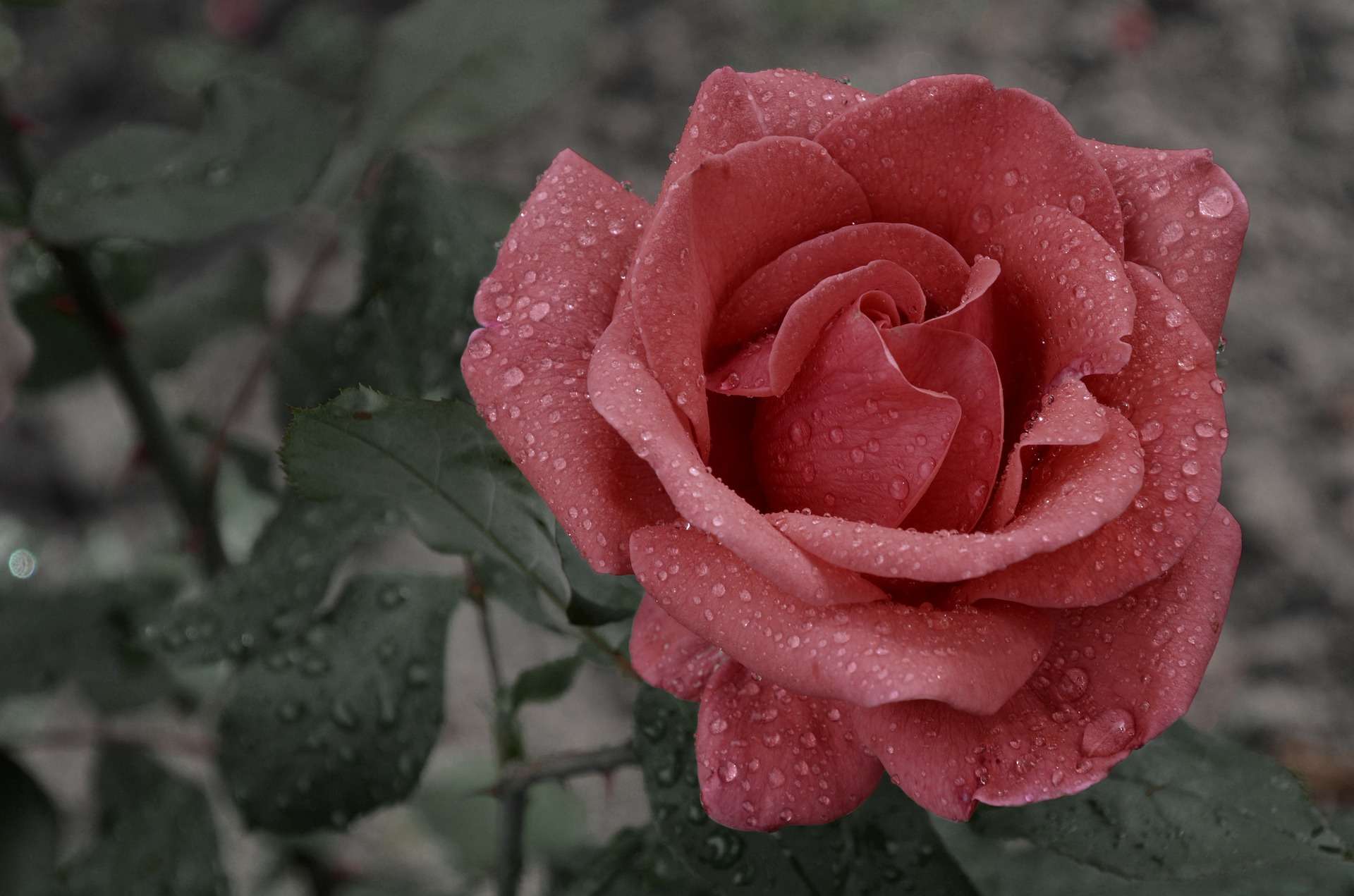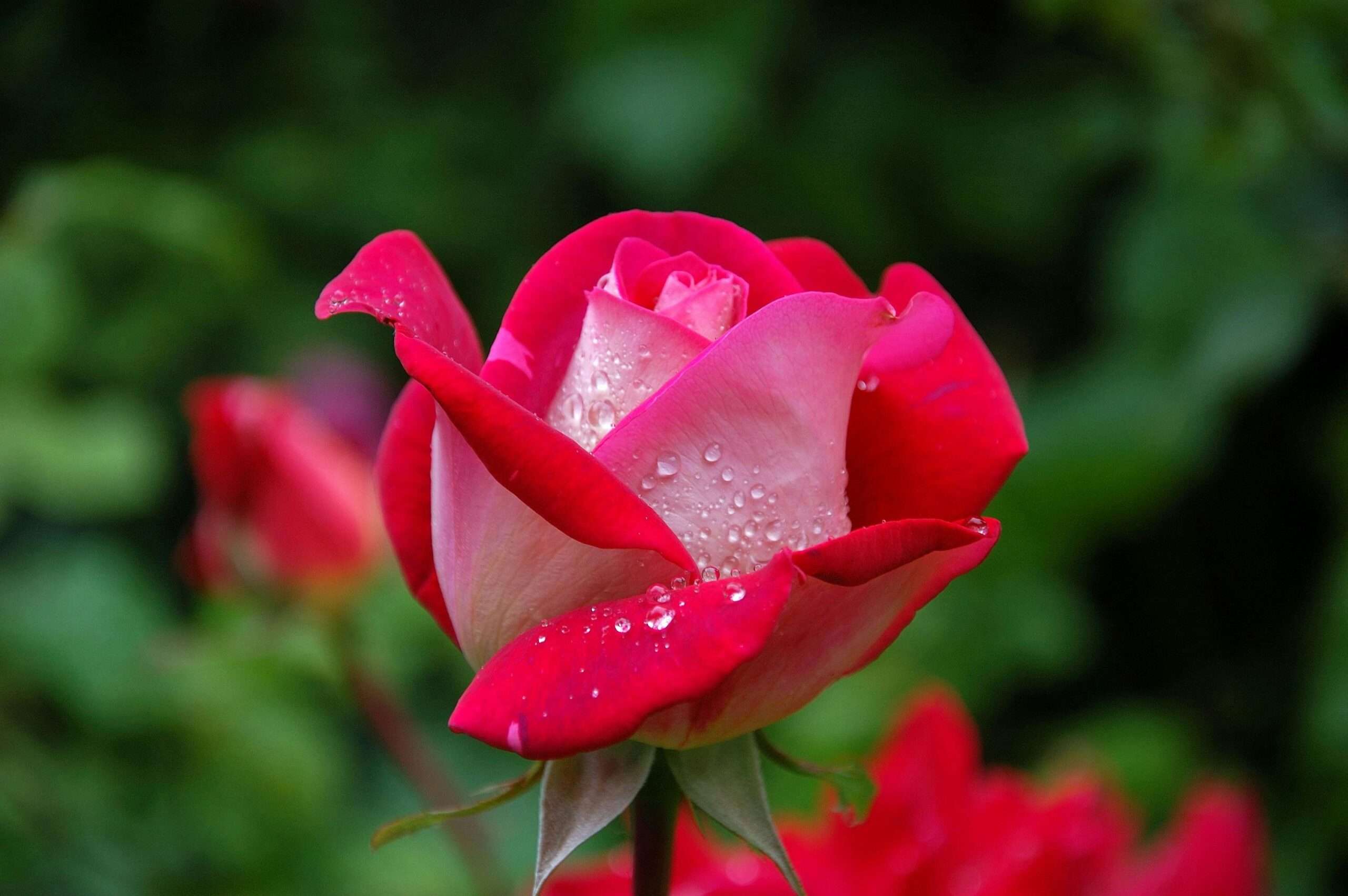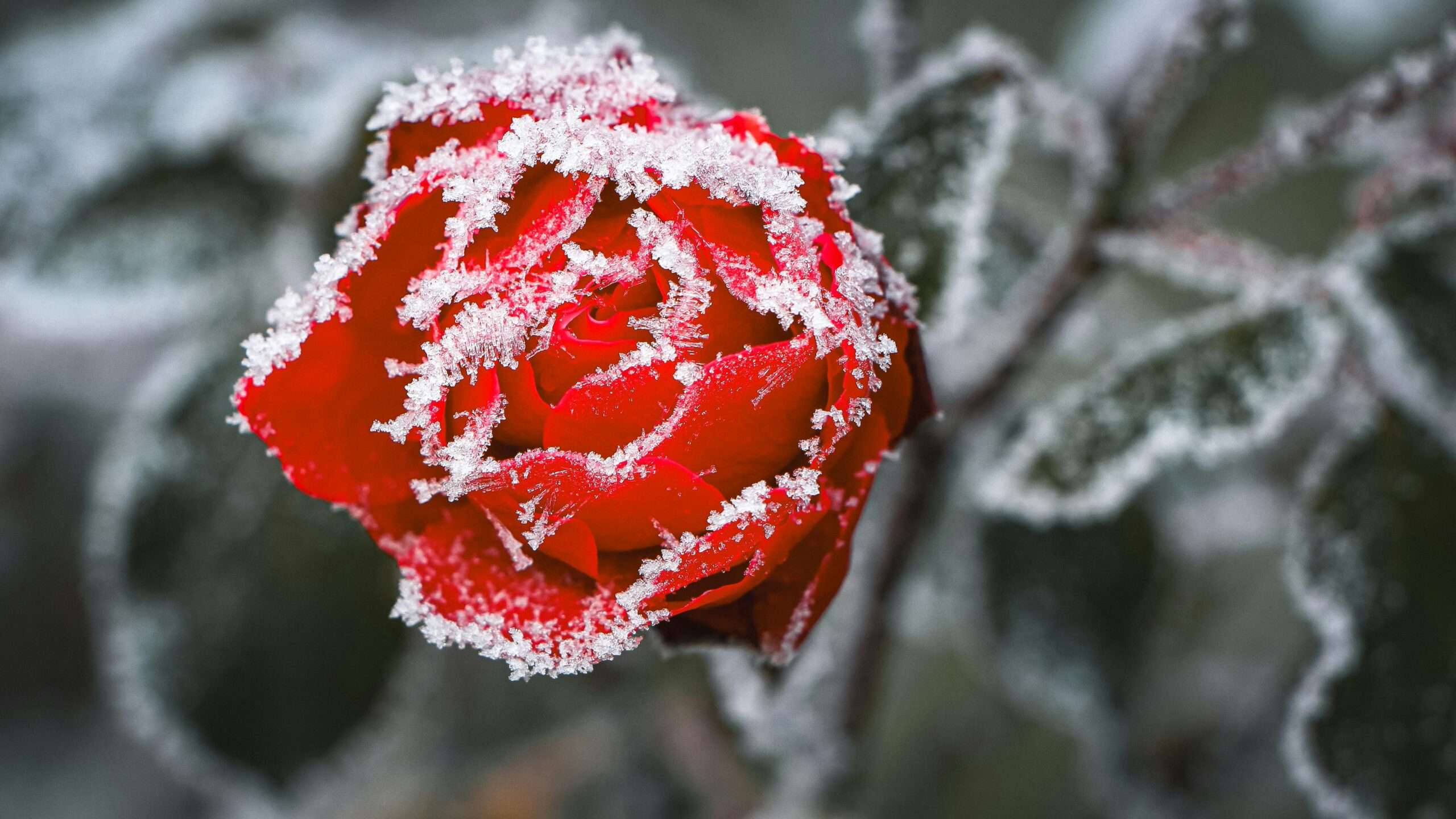Picture this: you’re wandering through your own garden, and it’s teeming with colorful, aromatic roses. The sight? Absolutely captivating. The scent? Positively enchanting. And the experience? Pure bliss! Roses, the “Queen of Flowers,” are adored worldwide for their beauty and fragrance. Let’s be honest: cultivating and caring for these majestic flowers is far from effortless. It takes some know-how and a dash of dedication. But don’t worry! We’ve got your back with some essential tips to make your roses the talk of the town. Learn about how to care for roses outdoors.
Table of Contents
1. Choosing the Right Rose Varieties

1.1. Understanding Rose Types
Roses are like people – each one is unique with its own quirks and charms. Understanding these differences is like matchmaking, ensuring you pick the perfect rose for your garden.
- Hybrid Teas: Imagine the supermodels of the rose world, with large, single blooms on long, elegant stems. They’re the divas perfect for cutting and showing off in vases.
- Floribundas: These vibrant roses are the stars of the garden, producing clusters of blossoms that maintain their vivid colors throughout the entire season. They’re hardy and easygoing, like that friend who’s always up for anything.
- Climbers: Think of these as the adventurous types. They love to climb trellises and fences, creating stunning vertical displays. They’re like the acrobats of your garden!
- Shrub Roses: These are the dependable, old-soul types. Varieties like David Austin roses have old-fashioned, fragrant blooms and are as tough as nails when it comes to disease resistance.
When choosing, think about your local climate, garden space, and how much time you want to spend pampering your roses.
1.2. Disease-Resistant Varieties
Let’s face it, nobody likes dealing with sick plants. Choosing disease-resistant varieties is like giving your roses a suit of armor against common ailments.
- Why It Matters: Disease-resistant roses are like the superheroes of the garden world. They fend off black spot, powdery mildew, and rust with ease, meaning less work for you and more time to enjoy their beauty.
- Examples: Knock Out roses, Drift roses, and Earth-Kind roses are the A-team here, bred for their resilience and easy-going nature. They’re perfect for gardeners who want stunning blooms without the drama.
2. Planting Roses Properly

2.1. Choosing the Perfect Spot: How to Nurture Roses in an Outdoor Setting?
Location, location, location! It’s as crucial for roses as it is for real estate.
- Sunlight: Roses are sun worshippers. They need at least 6 hours of direct sunlight daily to strut their stuff. Find the sunniest spot in your garden and let them bask.
- Soil Drainage: Imagine wearing soggy socks all day – that’s how roses feel in poorly drained soil. Make sure their feet stay dry!
- Air Circulation: Good air circulation is like a fresh breeze on a hot day. It keeps your roses happy and helps prevent nasty fungal diseases. Give them space to breathe.
2.2. Planting Techniques – how to care for roses outdoors?
Proper planting is like setting a solid foundation for a house – it’s essential for long-term success.
- Bare-Root Roses: Give these guys a nice soak before planting. Dig a roomy hole, make a cozy mound of soil at the bottom, and position the rose so its bud union (the swollen area) is just above ground level. Fill the hole with soil and tuck it in gently.
- Potted Roses: These need a good drink before you take them out of the pot. Dig a slightly larger hole than the root ball, plant at the same depth as in the pot, and backfill with soil. Remember to give them a thorough watering afterward.
Proper spacing is crucial: hybrid tea roses and floribundas require around 18 to 24 inches of room, while climbing and shrub roses often need a bit more space to thrive.
3. Watering Roses Effectively
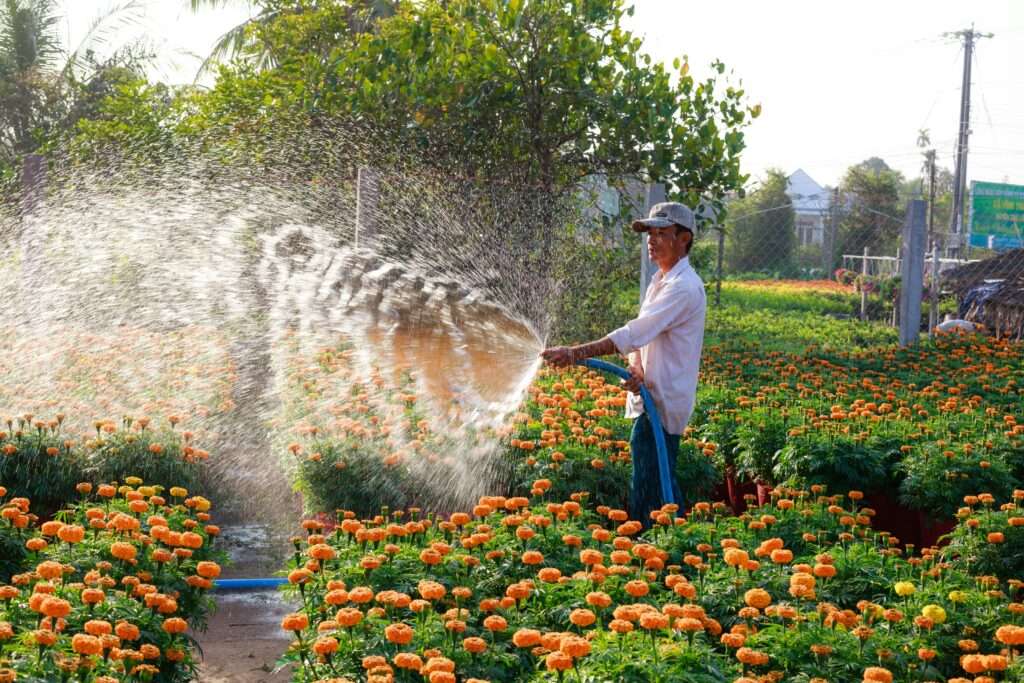
3.1. Outdoor Rose Care: Crafting an Effective Watering Schedule
Roses share a similarity with us – they require consistent hydration to remain vibrant, yet an excess of water can lead to problems.
- Frequency: Deep watering once a week is usually enough, but in scorching weather, they might need a bit more TLC. Newly planted roses are like babies; they need more frequent attention.
- Signs of Overwatering: Yellowing leaves, root rot, and lackluster blooms are to roses what a bad hair day is to people – far from ideal!
- Signs of Underwatering: Wilting, dry leaves, and stunted growth mean your roses are parched and need a drink.
3.2. Best Watering Practices
Mastering the art of watering is like finding the perfect balance in life.
- Deep Watering: This fosters deep root growth, enhancing the resilience of your roses against drought conditions.
- Drip Irrigation and Soaker Hoses: These techniques are akin to transporting water directly to the doorstep of your roses. They save water and keep the foliage dry, reducing the risk of fungal infections.
4. Fertilizing for Optimal Growth
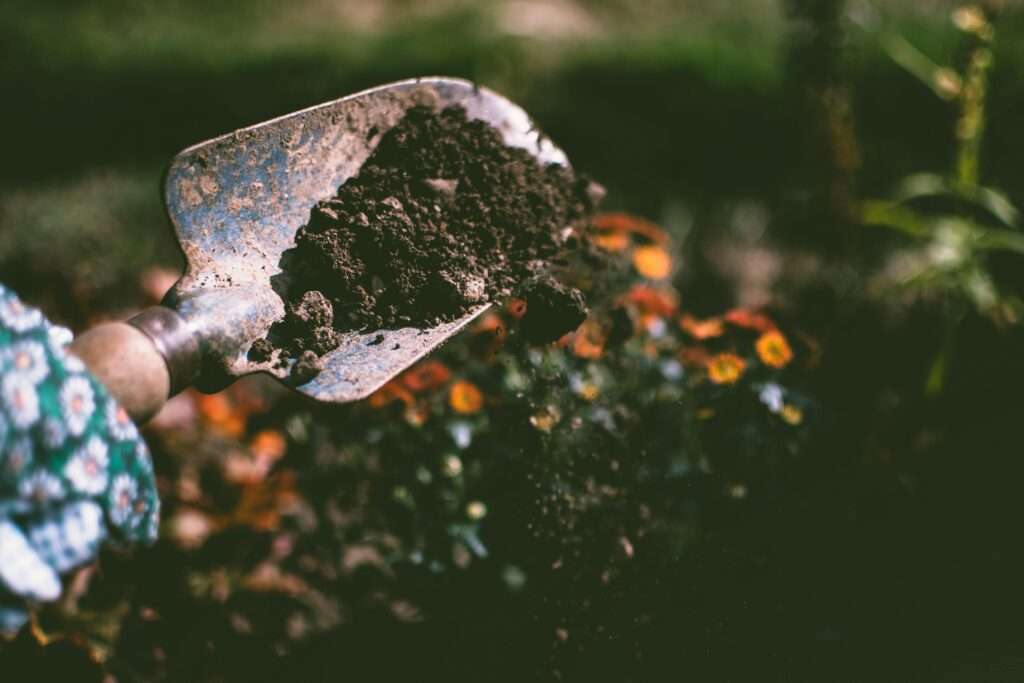
4.1. Types of Fertilizers
Think of fertilizers as the gourmet meals for your roses – they provide essential nutrients for growth and beauty.
- Organic Fertilizers: Composted manure, bone meal, and fish emulsion are like the wholesome, home-cooked meals of the fertilizer world. They improve soil health and provide a slow-release of nutrients.
- Synthetic Fertilizers: These are the fast food of fertilizers – quick and convenient but need to be used carefully. A balanced 10-10-10 formula is like a well-rounded diet for your roses.
4.2. Application Tips
Applying fertilizer correctly is like seasoning a dish – too much can ruin it, but the right amount makes it perfect.
- How and When to Apply: Start in early spring when new growth begins and continue every 4-6 weeks until late summer. Skip late fall applications to avoid encouraging new growth that could get nipped by frost.
- Avoiding Mistakes: Over-fertilizing is like overloading on junk food – it can cause more harm than good. Always water thoroughly after applying fertilizer to help it reach the roots.
5. Pruning and Deadheading
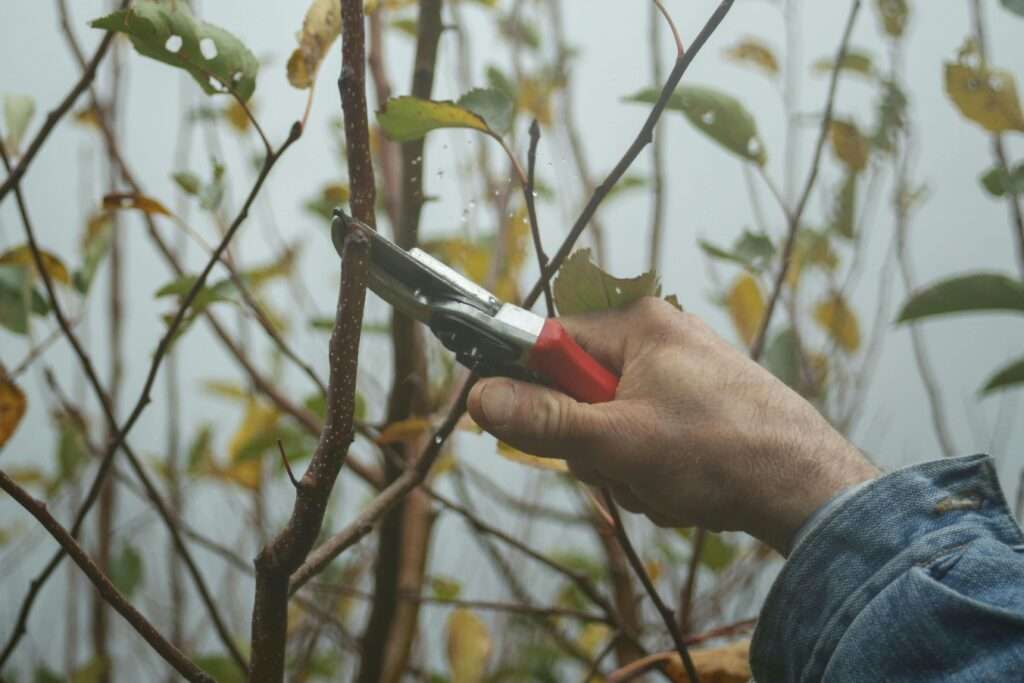
5.1. Pruning Basics
Pruning is like giving your roses a stylish haircut – it keeps them healthy and looking their best.
- Why Prune: Pruning removes dead or diseased wood, encourages new growth, and improves air circulation. Plus, it shapes your rose and promotes bigger, more beautiful blooms.
- When to Prune: Late winter or early spring is prime time. For repeat-blooming roses, light pruning after each bloom cycle keeps the flowers coming.
5.2. Deadheading Techniques
Deadheading is like a beauty touch-up – it encourages more blooms and keeps your roses looking fresh.
- How to Deadhead: Use sharp pruners to cut just above the first set of healthy, outward-facing leaves. This helps the plant focus on producing new blooms instead of seeds.
- Benefits: Consistently removing spent blooms leads to an abundance of blossoms and a neater look, transforming your garden into a captivating spectacle.
6. Managing Pests and Diseases

6.1. Common Rose Pests
Pests behave akin to unexpected visitors crashing a celebration – they have the potential to dampen the enjoyment if not effectively controlled.
- Identification: Look out for aphids, spider mites, and Japanese beetles. Symptoms like distorted leaves, sticky residue, and visible insects are telltale signs.
- Control Methods: Incorporate indigenous predators such as ladybugs, utilize insecticidal soaps, or administer neem oil. Chemical pesticides should be considered as a final option, akin to summoning the SWAT team.
6.2. Preventing and Treating Diseases
Diseases can sap the life out of your roses, but with the right care, you can keep them at bay.
- Common Diseases: Black spot, powdery mildew, and rust are common culprits. Symptoms include black or yellow spots, white powdery residue, and orange pustules.
- Prevention and Treatment: Ensure good air circulation, avoid overhead watering, and clean up fallen leaves. Use fungicides as needed and inspect regularly for early signs of trouble.
7. Seasonal Rose Care

7.1. Preparing for Winter
Preparing for winter is akin to gently tucking your roses into a cozy bed for a prolonged slumber. This thoughtful care ensures they emerge vibrant and resilient when spring arrives.
- Winter Protection: In colder climates, mulch heavily around the base and use burlap or rose cones to protect against harsh conditions.
- Winterizing Techniques: Stop fertilizing 6 weeks before the first frost to let plants harden off. Light pruning removes weak canes that might not survive the winter.
7.2. Spring and Summer Maintenance
Regular care during the growing season is like giving your roses a spa day – it keeps them healthy and blooming beautifully.
- Spring Tasks: Remove winter protection, prune as needed, and apply a balanced fertilizer. Check for pests and diseases as the weather warms.
- Summer Care: Keep up with watering, fertilizing, and deadheading. Watch for pests and diseases, and mulch to conserve moisture and keep roots cool.
- Learn – “ROSE SHRUB MAINTENANCE: AN INTRODUCTORY MANUAL FOR CULTIVATING ROSE PLANTS”
Conclusion
We’ve covered the essential tips for outdoor rose care, from choosing the right varieties to seasonal maintenance. By grasping the requirements of your roses and consistently tending to them, you can revel in a garden adorned with robust, lively blossoms. Now, it’s time to roll up your sleeves, get your hands dirty, and watch your roses thrive. Happy gardening! 🌹
What are the best rose varieties for beginners?
Embarking on your rose gardening journey? Start with varieties that offer ease and resilience. Knock Out roses are a stellar choice, celebrated for their hardiness and minimal maintenance. Similarly, Drift roses and Earth-Kind roses are superb options. These varieties are meticulously bred to withstand common rose diseases and pests, ensuring a flourishing garden with less effort.
How often should I water my roses?
Roses crave a deep, thorough watering about once a week, though this can vary with weather conditions. During sweltering, arid spells, you may need to increase the frequency. Deep watering encourages robust root growth, anchoring the plants firmly in the soil. Newly planted roses, in particular, demand more frequent hydration to establish their roots effectively.
When is the best time to prune roses?
When it comes to pruning roses, timing is of the essence. For most varieties, late winter or early spring, just before the onset of new growth, is ideal. Repeat-blooming roses benefit from light pruning after each bloom cycle, which promotes continuous flowering throughout the growing season. This careful timing and method will help maintain the health and beauty of your rose bushes.
How can I prevent diseases in my roses?
Combatting diseases like black spot, powdery mildew, and rust requires strategic gardening practices. Ensure good air circulation by properly spacing your roses and maintaining regular pruning. Avoid overhead watering to keep foliage dry, and diligently clean up fallen leaves and debris. Opting for disease-resistant varieties can significantly mitigate the risk of infections, contributing to a healthier rose garden.
What type of fertilizer should I use for my roses?
Selecting the right fertilizer for your roses can make a substantial difference. Both organic and synthetic fertilizers have their merits. Organic options, such as composted manure, bone meal, and fish emulsion, enhance soil health and provide a slow release of nutrients. Synthetic fertilizers offer a rapid nutrient boost, often with a balanced 10-10-10 mix. Begin fertilizing in early spring and maintain this regimen every 4-6 weeks until the end of summer. Always water your roses thoroughly after fertilizing to help the nutrients penetrate the soil and reach the roots.

